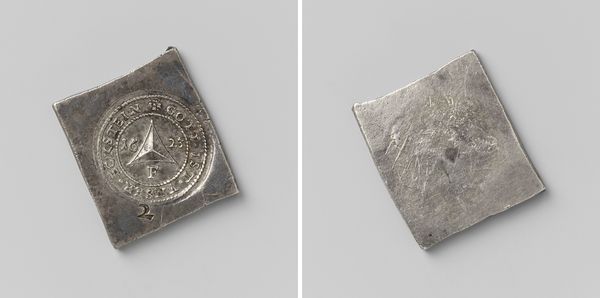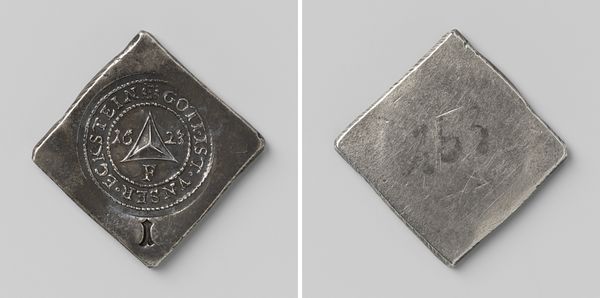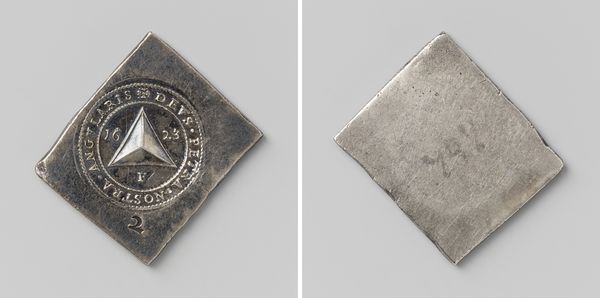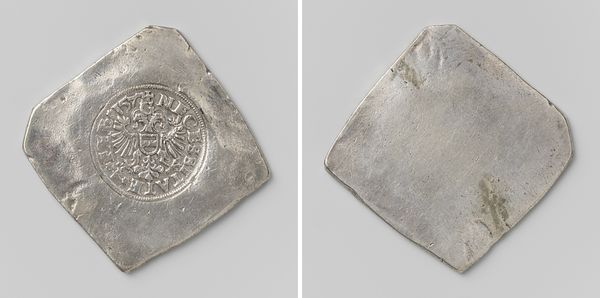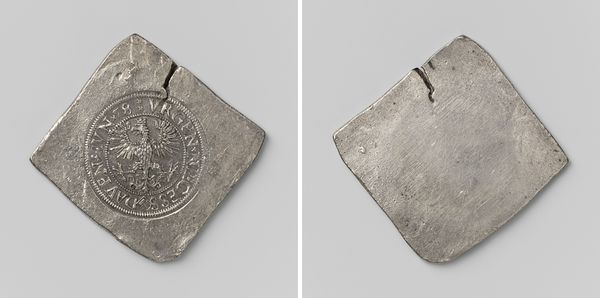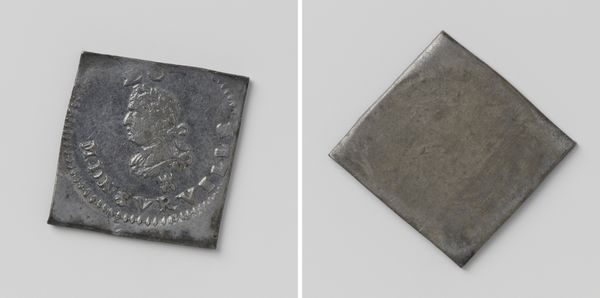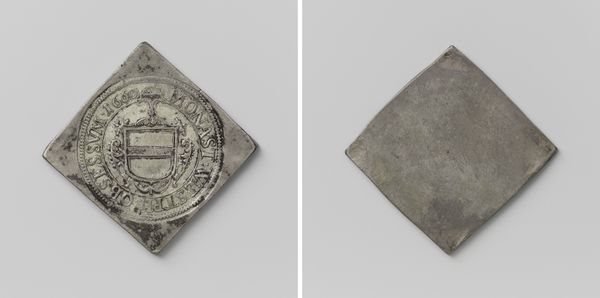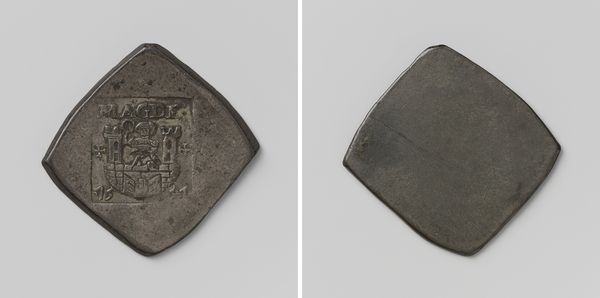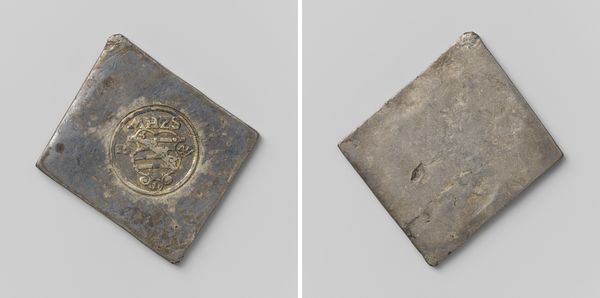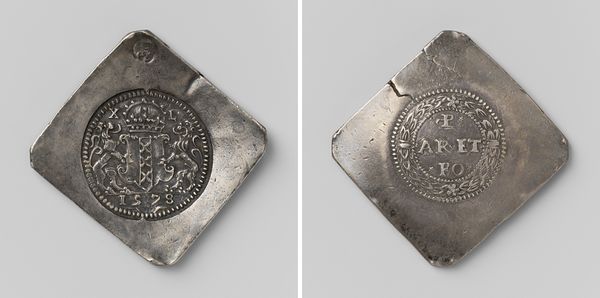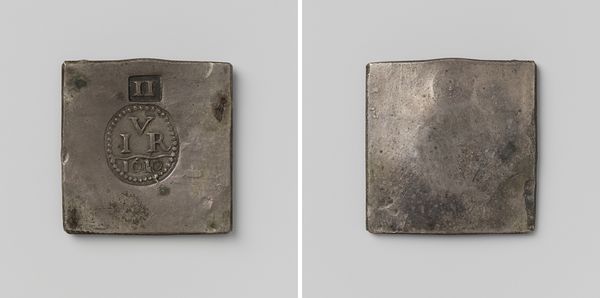
vijftien batz, noodmunt uit Frankenthal, geslagen tijdens het beleg door Verdugo 1623
0:00
0:00
print, metal, engraving
#
baroque
# print
#
metal
#
engraving
Dimensions: height 2.9 cm, width 2.8 cm, weight 9.39 gr
Copyright: Rijks Museum: Open Domain
Curator: Immediately striking is the utter austerity of this square of metal—almost like a flattened pyramid in its stoicism. What are we looking at? Editor: This is a fifteen batz, an emergency coin minted in Frankenthal in 1623, during a siege by Verdugo. We could label its style as Baroque, though perhaps ‘survivalist baroque’ is more accurate. Curator: Baroque, certainly, in its urge toward grandeur, but crushed, flattened, and made desperate by circumstance. Tell me more about its creation. Editor: Well, consider that this isn’t just coinage, it’s siege coinage. Resources were dwindling, regular methods unavailable. The material itself dictates the blunt geometry of this object. Curator: So the crude form is a direct consequence of the socio-economic context? I see the rough edges as more evocative. A formal breaking with typical numismatic conventions, pushing the limits of what currency could be. Editor: Exactly. Each facet shows signs of rough handling, attesting to its production context in a volatile socio-political landscape. Each strike of the die would have been a testament to the town's resolve. This wasn’t carefully crafted; it was rapidly deployed into circulation, speaking volumes about necessity trumping luxury. Curator: Note how the central circle almost seems crushed by the larger square—an encapsulation of its historic constraints. There's something poignant about this awkward composition. It reflects a community under intense external pressure, holding onto symbolic and literal currency for dear life. Editor: And if you look closely at the symbols stamped upon the surface of the coin, we see more of that societal desperation conveyed within these deliberate imperfections of production. You see the bare minimum needed to conduct the transactional nature of besieged life is conveyed— XV, 1623, and Batz marked in a circle over the silver square. It strips away unnecessary extravagance to focus on material needs. Curator: Yes, it is very sobering when viewing this artifact to ponder the circumstances which caused it to take this very unconventional shape. The designer probably hoped they would not have to do this kind of work under these circumstances again. Editor: I’ll agree it is stark, perhaps unintentionally expressive through its limitations. What survives are process and form as a result.
Comments
No comments
Be the first to comment and join the conversation on the ultimate creative platform.
